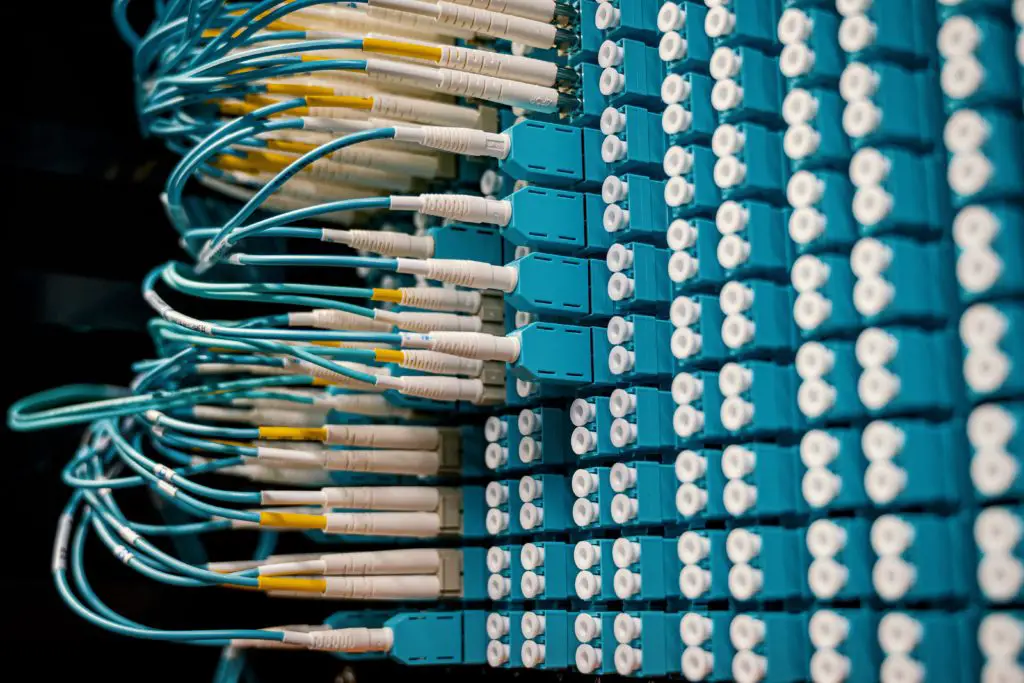A coaxial cable is used for many communication purposes. It is an electrical cable that carries high-frequency electrical signals with low loss. The coaxial cable is a special cable that is very different from others as it maximizes transmission with very little to no disruption by external forces. The cable achieves this by blocking signal interference. As a result, the cable soon became a very popular means of transmission being used by: internet providers, telephone companies and cable operators for various data transmission purposes. Let us take you through everything you need to know about what is coaxial cable and its applications.

History
The idea behind the coaxial cable was explained by English engineer ‘Oliver Heavside’ who patented the invention in 1880, while the use of this cable had been much earlier (as early as thirty years before).
Design
A simple coaxial cable design contains two rings of conductors separated by a dielectric insulator.
The inner conductor is known as the center core, while the other is known as the outer conductor or metal shield and can be layered as much as four times. Finally, the entirety of the materials is sheathed by a plastic jacket.
This unique design ensures that the cable can restrict any signal without it to the dielectric within without losing any current outside of the metallic shield.
The design of the coaxial cable allows it to shield the inner metal that may be transmitting low signals that can easily be diverted with the slightest interference and control high signals that may want to spread unhinged.
The cable works with a connector system, with the connector with the wire being the male and the one with the slot for the wire being the female connector.
Types of coaxial cables
Coaxial cables are classified into types by the different materials and setup that are used in their design and their uses.
Some of which are:
- Hard-line cable
- Radiating cable
- Triaxial cable
Hard-line
This cable used different metals combined as an outer layer with copper tubing as the core. This cable is used primarily in broadcasting and communication dealing with radios.
Radiating
The radiating cable is similar to the hard-line design, but one major difference is the slots cut into the outer conductor. These slots allow specific radio frequency passage through them. It provides for the entrance and departure of signals where an antenna is unavailable, which is why it is used in the US Navy and underground tunnels.
Triaxial
The triaxial cable triples everything: plastic sheeting, dielectric insulator and outer conductor. The outer metal shield is grounded and provides more intense protection from external interference.
Types of Connectors
Some types of Connectors used in coaxial cables are:
- F-connectors
- BNC connectors
- TNC connectors
- SMA connectors
- RCA connectors
- QMA connectors
Uses of Coaxial Cable
The coaxial cable was ideal for transmitting radio signals because the electromagnetic field for transmission existed between the inner and outer conductor, meaning it could be situated around metallic objects that would initially interfere with its field. They are used for televisions, radios, automobiles, and medical equipment; we’ve even used them before for Ethernet cables. Now the coaxial cable is used primarily for an antenna to receiver transmission in television sets.
Disadvantages of the Coaxial Cable
While the coaxial cable was an ideal to shield transmission from interference, it still came with its issues.
Interference
Though the cable boasted of its ability to shield signals from interference, this was still one of its problems. Through ingress or egress, signals could either enter or leave the cable, causing noise and disruption of signal. In addition, if the outer conductor contains has or holes (as in braided conductors) external electromagnetic fields could also penetrate the cable.
Common mode current and radiation
The external conductor is used to ward away unwanted current, but when these currents begin to flow in the same direction and the current-carrying signal in the inner conductor it works out of line with the push-pull system of the coaxial cable, causing radiation.
Conclusion
The coaxial cable might have faded out in some of its former usages, but it still makes up an integral medium for utilizing home appliances where signals are involved.
Frequently Asked Questions
- Is the coaxial cable better than a fiber optic cable?
It depends on what the cable is being used for. While fiber optic cables are helpful for long-distance transmission, coaxial cables are much suited for short distances. Coaxial cables are more cost-efficient and reliable at home, while fiber optic cables are expensive even though they possess higher and faster data transfer.
- Where can I find coaxial cables?
Practically everywhere. They are pretty standard; coaxial cables can be found in your typical hardware stores, convenience stores and even online shopping platforms. You probably have one in your house right now.


